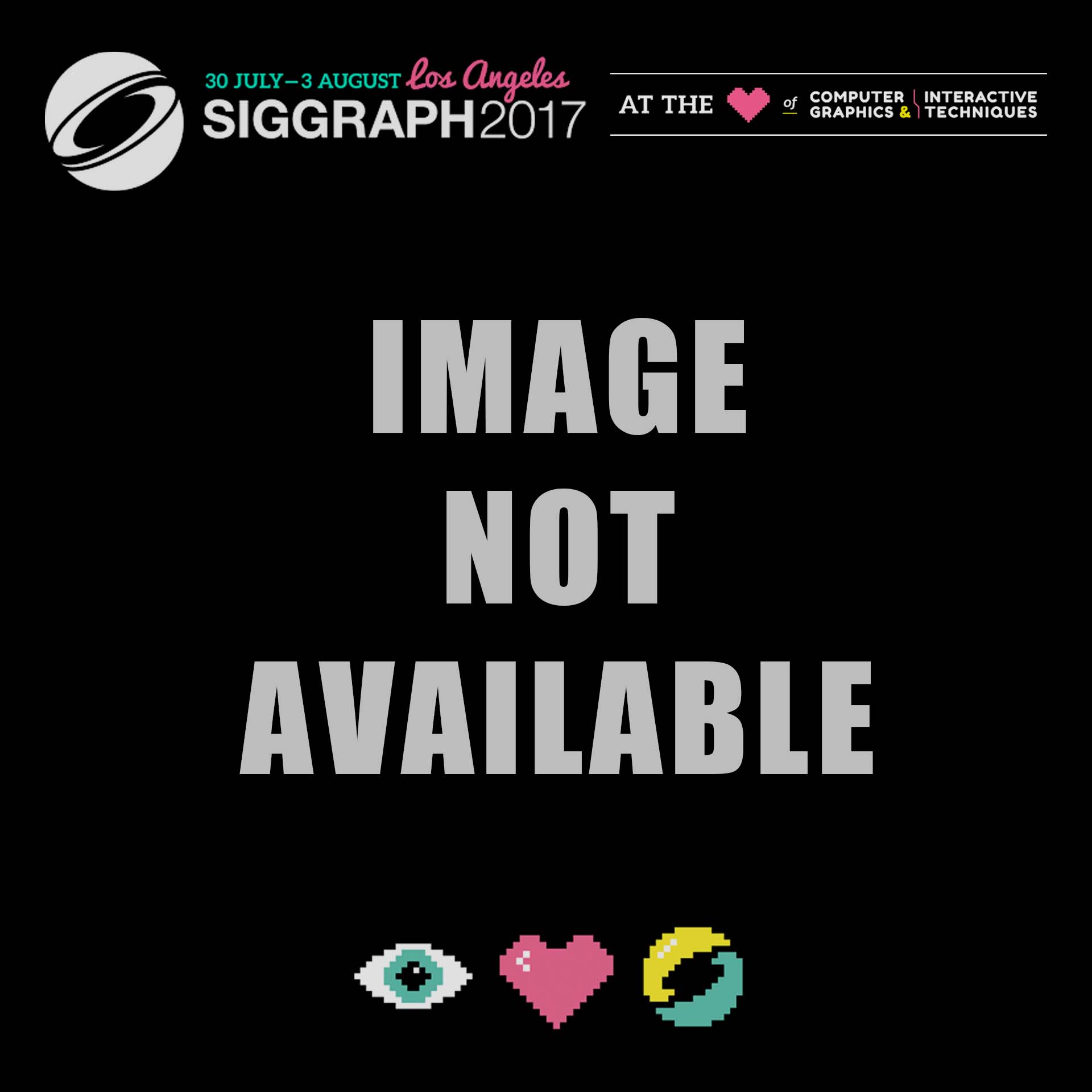“Optimal Camera Placement for Motion Capture Systems” by Rahimian and Kearney
Conference:
Title:
- Optimal Camera Placement for Motion Capture Systems
Session/Category Title: IEEE TVCG Session on Advances in Virtual and Augmented Reality
Presenter(s)/Author(s):
Abstract:
This talk introduces and compares two methods for camera placement, based on target-point visibility in the presence of dynamic occlusions and on distribution of views of target points, respectively.
References:
[1] C. Cruz-Neira, D. J. Sandin, and T. A. DeFanti, “Surround-screen projection-based virtual reality: the design and implementation of the CAVE,” in Proc. 20th Annu. Conf. Comput. Graph. Interactive Techn., 1993, pp. 135–142.
[2] P. Rahimian, E. E. O’Neal, J. P. Yon, L. Franzen, Y. Jiang, and J. M. Plumert, “Using a virtual environment to study the impact of sending traffic alerts to texting pedestrians,” in Proc. IEEE Virtual Real., 2016, pp. 141–149.
[3] J. N. Sanders-Reed, “Error propagation in two-sensor threedimensional position estimation,” Opt. Eng., vol. 40, pp. 627–636, 2001.
[4] G. Olague and R. Mohr, “Optimal camera placement for accurate reconstruction,” Pattern Recognit., vol. 35, pp. 927–944, 2002.
[5] C. K. Cowan and P. D. Kovesi, “Automatic sensor placement from vision task requirements,” IEEE Trans. Pattern Anal. Mach. Intell., vol. 10, no. 3, pp. 407–416, May 1988.
[6] S. Mason, “Heuristic reasoning strategy for automated sensor placement,” Photogrammetric Eng. Remote Sens., vol. 63, pp. 1093– 1101, 1997.
[7] J. J. Wu, R. Sharma, and T. S. Huang, “Analysis of uncertainty bounds due to quantization for three-dimensional position estimation using multiple cameras,” Opt. Eng., vol. 37, pp. 280–292, 1998.
[8] X. Chen and J. Davis, “An occlusion metric for selecting robust camera configurations,” Mach. Vis. Appl., vol. 19, pp. 217–222, 2008.
[9] S. Kirkpatrick, C. D. Gelatt, and M. P. Vecchi, “Optimization by simulated annealing,” Science, vol. 220, pp. 671–680, 1983.
[10] M. Z. Brown, D. Burschka, and G. D. Hager, “Advances in computational stereo,” IEEE Trans. Pattern Anal. Mach. Intell., vol. 25, no. 8, pp. 993–1008, Aug. 2003.
[11] R. I. Hartley and P. Sturm, “Triangulation,” Comput. Vis. Image Understanding, vol. 68, pp. 146–157, 1997.
[12] B. Liu, M. Yu, D. Maier, and R. M€anner, “An efficient and accurate method for 3D-point reconstruction from multiple views,” Int. J. Comput. Vis., vol. 65, pp. 175–188, 2005.
[13] R. Hartley and A. Zisserman, Multiple View Geometry in Computer Vision. Cambridge, U.K.: Cambridge Univ. Press, 2003.
[14] J. N. Sanders-Reed, “Impact of tracking system knowledge on multisensor 3D triangulation,” in Proc. AeroSense, 2002, pp. 33–41.
[15] M. Lourakis and A. Argyros, “The design and implementation of a generic sparse bundle adjustment software package based on the levenberg-marquardt algorithm,” Institute of Computer Science-FORTH, Heraklion, Crete, Greece, Tech. Rep. 340, 2004.
[16] S. Fleishman, D. Cohen-Or, and D. Lischinski, “Automatic camera placement for image-based modeling,” Comput. Graph. Forum, vol. 19, no. 2, pp. 101–110, 2000.
[17] J. O’Rourke, Art Gallery Theorems and Algorithms, vol. 57. Oxford, U.K.: Oxford University Press, 1987.
[18] T. C. Shermer, “Recent results in art galleries [geometry],” Proc. IEEE, vol. 80, no. 9, pp. 1384–1399, Sep. 1992.
[19] S. P. Brooks and B. J. Morgan, “Optimization using simulated annealing,” Statistician, vol. 44, pp. 241–257, 1995.
[20] L. Ingber, “Simulated annealing: Practice versus theory,” Math. Comput. Model., vol. 18, pp. 29–57, 1993.
[21] P. J. Van Laarhoven and E. H. Aarts, Simulated Annealing: Theory and Applications, vol. 37. Berlin, Germany: Springer, 1987.
[22] Optitrack, “Motive: Tracker,” 2016. [Online]. Available: http:// wiki.optitrack.com
[23] E. B. Saff and A. B. Kuijlaars, “Two algorithms for constructing a Delaunay triangulation,” Math. Intell., vol. 19, no. 1, pp. 5–11, 1997.
[24] D.-T. Lee and B.J. Schachter, “Distributing many points on a sphere,” Int. J. Comput. Inf. Sci., vol. 9, no. 3, pp. 219–242, 1980.
[25] P. Cignoni and C. Montani, and R. Scopigno, “DeWall: A fast divide and conquer Delaunay triangulation algorithm in E d.,” Comput.-Aided Design, vol. 30, no. 5, pp. 333–341, 1998.
[26] F. Aurenhammer and R. Klein, “Voronoi diagrams,” Handbook Comput. Geometry, vol. 5, pp. 201–290, 2000.
[27] S. Fortune and R. Klein, “A sweepline algorithm for Voronoi diagrams,” Algorithmica, vol. 2, pp. 153–174, 1987.
[28] R. L. Graham and P. Hell, “On the history of the minimum spanning tree problem,” Ann. History Comput., vol. 7, no. 1, pp. 43–57, 1985.
[29] M. Tuceryan and T. Chorzempa, “Relative sensitivity of a family € of closest-point graphs in computer vision applications,” Pattern Recognit., vol. 24, no. 5, pp. 361–373, 1991. 1220 IEEE TRANSACTIONS ON VISUALIZATION AND COMPUTER GRAPHICS, VOL. 23, NO. 3, MARCH 2017 Authorized licensed use limited to: Bowling Green State Univ. Downloaded on December 16,2024 at 19:56:23 UTC from IEEE Xplore. Restrictions apply.
[30] P. P. Rahimian and J. K. Kearney, “Software for Camera Calibration using Spatial Distribution and Occluder-Based Objective Functions,” https://psychology.uiowa.edu/hankvirtual-environments-lab/lab-publications, 2017.





